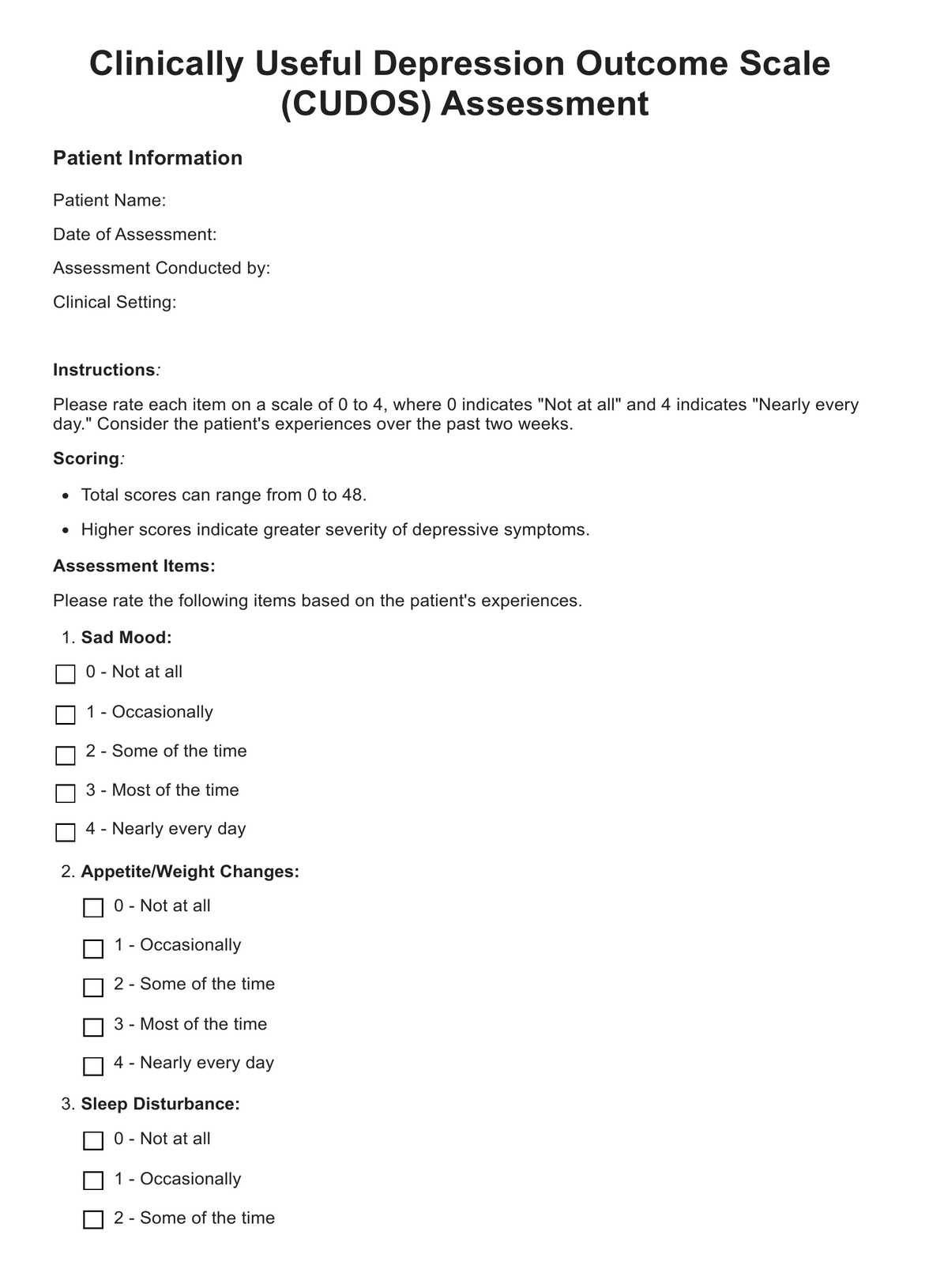The Clinically Useful Depression Outcome Scale (CUDOS) was designed to be brief, can usually be completed within 3 minutes, and can typically be scored within 15 seconds. However, it is important to note that the time to accomplish CUDOS varies depending on several factors, including the individual’s reading ability and comprehension.

Clinically Useful Depression Outcome Scale (CUDOS)
Assess the severity of depressive symptoms with the Clinically Useful Depression Outcome Scale (CUDOS). You can download a free, PDF copy here.
Clinically Useful Depression Outcome Scale (CUDOS) Template
Commonly asked questions
The Clinically Useful Depression Outcome Scale (CUDOS) is easy to interpret. It uses a score range with corresponding depression severity. A score ranging from 0–10 indicates “non-depressed,” 11–20 indicates “minimal depression,” 21–30 indicates “mild depression,” 31–45 indicates “moderate depression,” and a score of 46 and above score means severe depression.
The Clinically Useful Depression Outcome Scale (CUDOS) is used by psychologists, counselors, therapists, physicians, researchers, and other relevant professionals. The administration of CUDOS required training and familiarity. However, although it is a professional tool, patients can also use this for self-monitoring.
EHR and practice management software
Get started for free
*No credit card required
Free
$0/usd
Unlimited clients
Telehealth
1GB of storage
Client portal text
Automated billing and online payments











